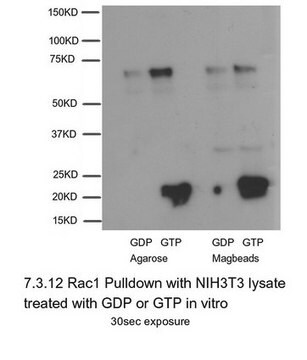202371
Poly(ethylenglykol)
average Mn 300, hydroxyl
Synonym(e):
PEG
About This Item
Empfohlene Produkte
product name
Poly(ethylenglykol), average Mn 300
Form
viscous liquid
Qualitätsniveau
Mol-Gew.
Mn 285-315
average Mn 300
Brechungsindex
n20/D 1.463
pH-Wert
6-7 (23 °C, at 10 g/l)
Viskosität
5.8 cSt(210 °F)(lit.)
mp (Schmelzpunkt)
−15-−8 °C (lit.)
Dichte
1.125 g/mL at 25 °C
Mw/Mn
1.1 (typical)
Ω-Ende
hydroxyl
α-Ende
hydroxyl
SMILES String
C(CO)O
InChI
1S/C2H6O2/c3-1-2-4/h3-4H,1-2H2
InChIKey
LYCAIKOWRPUZTN-UHFFFAOYSA-N
Suchen Sie nach ähnlichen Produkten? Aufrufen Leitfaden zum Produktvergleich
Verwandte Kategorien
Allgemeine Beschreibung
Anwendung
- PEG modification increases thermostability and inhibitor resistance of Bst DNA polymerase.: This study demonstrates that polyethylene glycol (PEG) modification significantly enhances the thermostability and inhibitor resistance of Bst DNA polymerase, highlighting PEG′s potential in improving enzyme performance for biotechnological applications (Yang et al., 2024).
- Development of Lyophilized Eukaryotic Cell-Free Protein Expression System Based on Leishmania tarentolae.: The incorporation of PEG in the lyophilization process of a cell-free protein expression system demonstrates its role in enhancing the stability and efficiency of biotechnological workflows (Alfaro-Palma et al., 2024).
- A comprehensive review on singlet oxygen generation in nanomaterials and conjugated polymers for photodynamic therapy in the treatment of cancer.: This review highlights the application of PEGylated nanomaterials in photodynamic therapy, emphasizing its significance in improving biocompatibility and therapeutic efficacy in cancer treatments (Singh et al., 2024).
Lagerklassenschlüssel
10 - Combustible liquids
WGK
WGK 1
Flammpunkt (°F)
428.0 °F - closed cup
Flammpunkt (°C)
220.00 °C - closed cup
Persönliche Schutzausrüstung
Eyeshields, Gloves
Hier finden Sie alle aktuellen Versionen:
Besitzen Sie dieses Produkt bereits?
In der Dokumentenbibliothek finden Sie die Dokumentation zu den Produkten, die Sie kürzlich erworben haben.
Kunden haben sich ebenfalls angesehen
Artikel
Universal Platform for Surface Modification Employing Grafted Polymer Layers
The present publication focuses on synthesis and characterization of nanothick, chemically grafted polymer films (polymer brushes) on various inorganic and polymeric substrates.
Unser Team von Wissenschaftlern verfügt über Erfahrung in allen Forschungsbereichen einschließlich Life Science, Materialwissenschaften, chemischer Synthese, Chromatographie, Analytik und vielen mehr..
Setzen Sie sich mit dem technischen Dienst in Verbindung.

